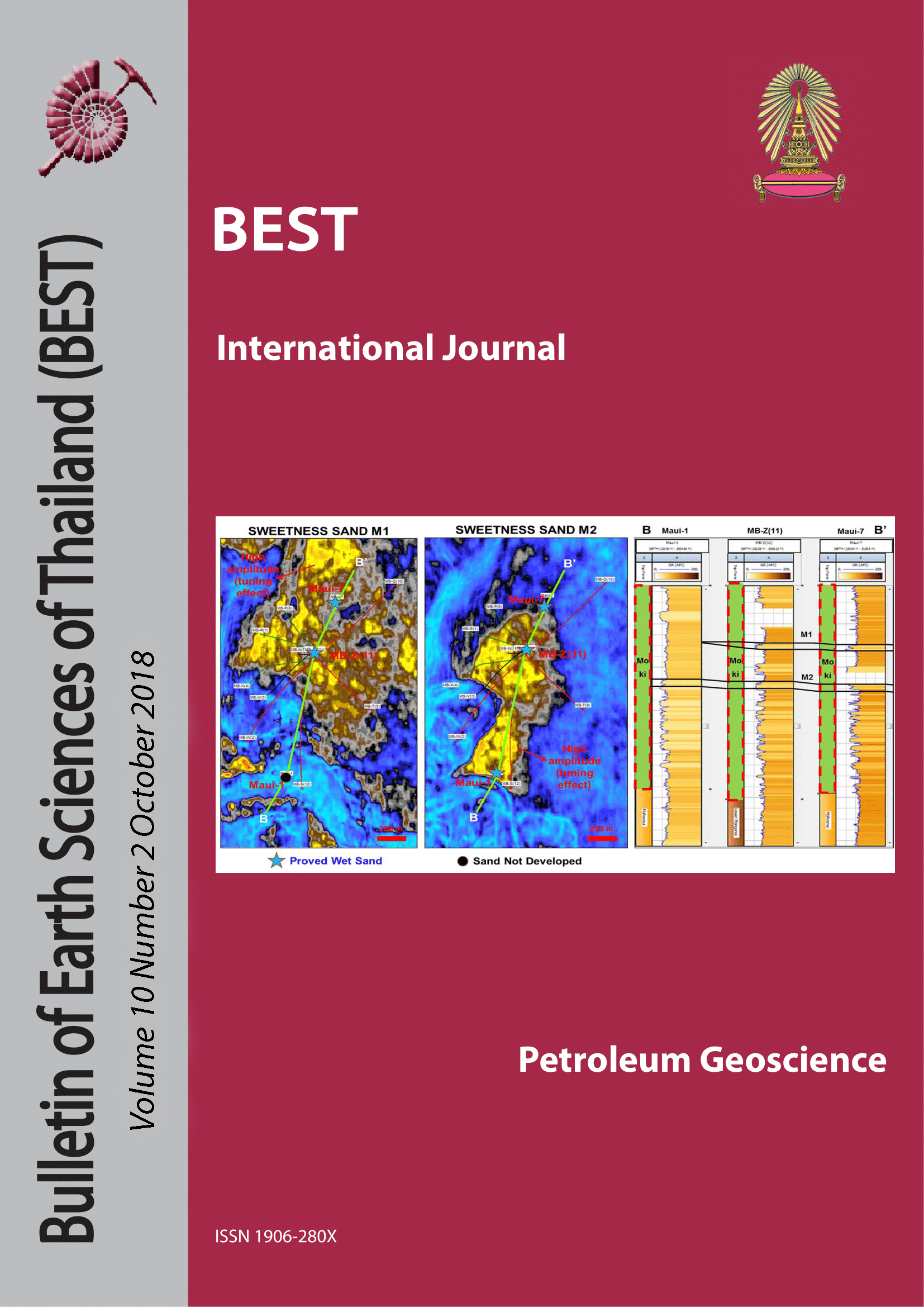Diagenetic Evolution and its Link to Poroperm Development in Paleozoic Carbonates of Cat Ba Island in Northeast Vietnam
Main Article Content
Abstract
The study focuses on the diagenetic development of Paleozoic carbonate rocks on the Cat Ba island-Northeast Vietnam, via the integration of outcrop study, especially fracture cements, and isotopic analysis. From the C-O isotope plot, there are two distinct trends: 1) burial trend and 2) meteoric mixing trend. Paleozoic limestone in Cat Ba island experienced a consistent set of burial re-equilibration processes preserving remnants of a very early stage of burial, until the oxygen isotope values of veins and matrix calcites reached around -12‰. Around this value, the permeability of matrix is lost. The rocks can be later fractured to create pathways for fluid during uplift or subsequent deformations. Most fractures formed after the loss of matrix permeability are linked to Tertiary strike-slip displacement, which created three main fracture orientations: NE-SW, NW-SE and NNE-SSW. A meteoric mixing trend is preserved in calcites cement infilling in these fractures and their associated speleothems. Their isotope plot outlines two groups: 1) flowstones precipitated from bicarbonate-rich water coming from dissolved limestone at depth; 2) precipitation from fluid-dominant soil waters, which indicates the influence of shallow meteoric groundwater supplying most of the bicarbonate ions (Moore, 2001). When compared with a similar study of outcrops in Thuy Nguyen district (80 km away), the results show similar trends, which indicates potential regional application. Techniques used in this studies can be combined with other conventional reservoir characterization techniques to better understand diagenesis-related poroperm development in carbonate basement play, especially in the Gulf of Tonkin.
Article Details

This work is licensed under a Creative Commons Attribution-NonCommercial-NoDerivatives 4.0 International License.
Copyright © 2008 Department of Geology, Faculty of Science, Chulalongkorn University. Parts of an article can be photocopied or reproduced without prior written permission from the author(s), but due acknowledgments should be stated or cited accordingly.
References
Allegre, C. J., 2008. Isotope Geology. Cambridge University Press, p.512.
Choquette, P. W., & Pray, L. C. (1970). Geologic nomenclature and classification of porosity in sedimentary carbonates. AAPG Bulletin,54(2), 207-250.
GDGMV. (1993). Geological and mineral resources map of Hai Phong area (Scale 1:50,000). General Department of Geology and Minerals of Vietnam.
Hitzman, M. W., (1999). Routine staining of drill core to determine carbonate mineralogy and distinguish carbonate alteration textures. Mineralium Deposita, v. 34, 794-798.
Mirzaloo, M., 2013. Depositional and Diagenetic Contrasts between Deep and Shallow Water Successions in the Permian Carbonate of Pak Chong Region, Central Thailand, Chulalongkorn University, (MSc thesis).
Nguyen, H. A., (2016). Characterization of Poroperm Development in a Paleozoic Carbonate Reservoir analog, Northern Vietnam. Bulletin of Earth Sciences,9, no.2, pp.
Nguyen, N. D., Truong, P. M., & Hiep, H. H. (2008). Structural features and models of water-bearing structure in Cat Ba island. Journal of Geology, 308(2008), A, 49-58.
Tri, T. V., Thanh, T. D., Waltham, T., An, L. D., & Anh, L. H. (2003). The Ha Long Bay World Heritage: Outstanding geological values. Journal of Geology,22, B, 1-18.
Warren, J. K., Christopher, K. Morley, Charoentitirat, T., Cartwright, I., Ampaiwan, P., Khositchaisri, P., Yingyuen, J. (2014.). Structural and fluid evolution of Saraburi Group sedimentary carbonates, central Thailand: A tectonically driven fluid system. Marine and Petroleum Geology,55, 100-121. Retrieved December 24, 2014, from www. elsevier.com/locate/marpetgeo.


